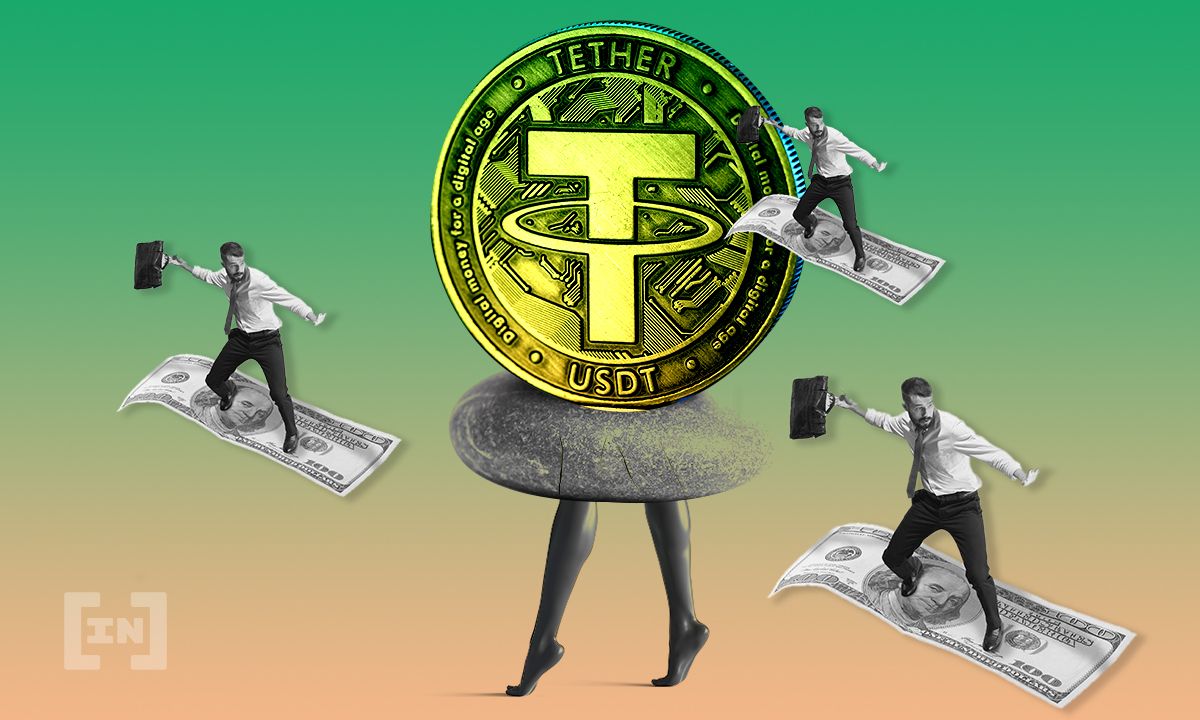Investors moved around $1.6 billion from USDC to rival stablecoin USDT over the past month as regulators in the U.S. clamped down on cryptocurrency companies.
A significant sum switched over to USDT after Aug. 10, when Circle, issuers of USDC, froze $75,000 USDC belonging to users linked with Tornado Cash, the crypto mixer sanctioned by the American government on money laundering allegations.
Circle said it froze the money to comply with U.S. sanctions law. But the decision provoked widespread criticism from crypto fundamentalists, concerned that corporate intrusion had eroded the cryptocurrency ethos of privacy and decentralization.
Investors flee USDC
According to Coinmarketcap, the total market capitalization of Tether’s eponymous USDT stablecoin swelled by about $1 billion to $67.43 billion in the five days following the blacklisting of Tornado Cash-related wallet addresses by Circle.
USDC’s total market value slumped by more than $500 million over the same period, the data shows, suggesting the outstanding balance in transfers to USDT may have originated from elsewhere.
Over the past four weeks, USDC’s market cap fell 2.3%, or $1.3 billion, to $53.5 billion as of Press time. That compares with a rise of 2.4%, or $1.57 billion, in the total market cap of USDT during the same period.
“After the recent regulatory push in the U.S. against crypto companies and tokens, I wouldn’t be surprised if institutions and larger players felt safer with their money outside the U.S.,” tweeted Gabor Gurbacs, strategy advisor at asset manager VanEck.
Both USDC and USDT are pegged to the dollar. While Hong Kong-based Tether has often been accused of a lack of transparency over the reserves backing its USDT stablecoin, Centre, the U.S. consortium behind USDC, is criticized for cozying up to government authorities.
Since the launch of USDC in September 2018, Centre has now banned 81 wallet addresses in compliance with U.S. government sanctions on crypto firms, individuals, or groups.
Tether had its own problems in May when panicky investors withdrew about $7 billion worth of USDT in a matter of days after the spectacular collapse of the Terra blockchain.
‘Crypto needs truly decentralized stables’
Ego Huang, CEO of crypto derivative trading platform Deepcoin, told Be[In]Crypto that USDC is hamstrung by assumptions of its “close dependence on the U.S. government’s regulatory regime.”
“[This makes] it very prone to being seized by American authorities,” he said. “The fact is that investors are not sentimental about any stablecoin issuer. Instead, they are interested in the safety of their funds and avoiding the intervention of centralized authorities.”
Huang added that the lack of defined regulation was “notably a tough one and no matter how Circle spins the situation to prevent a liquidity exodus from USDC, investors will still need an insurance or safety net, which they can find in USDT.”
Circle CEO Jeremy Allaire recently pledged more engagement to address privacy concerns that have dogged the company.
He said the Tornado Cash “regulatory intervention was flawed.” Allaire is committed to ramping up action on policy engagement to better protect user privacy in line with the foundational principles of crypto.
Iakov Levin, founder and CEO of crypto investment platform Midas Investments, said the “situation with Tornado Cash shows that no one is immune to the influence of regulators.”
“So, if they want to interfere with any part of the developing decentralized economy, then absolutely any protocol can find itself in Tornado’s place,” Levin told Be[In]Crypto. Continuing, he said:
“The users’ move from USDC to USDT is just a shift from one centralized stablecoin to another. Noone can guarantee that USDT will not release similar sanctions and start blocking wallets. That’s why the crypto market needs overcollateralized algorithmic stablecoins like FRAX and LUSD.”
